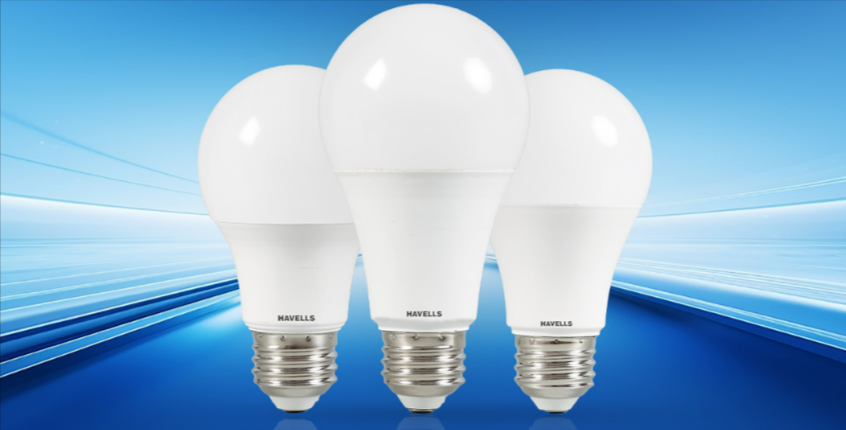How LED Lighting Works: A Deep Dive into Energy-Efficient Illumination
- floomarktechnology
- Jul 14
- 3 min read

Lighting plays an essential role in our daily lives—from brightening up our homes to powering industrial spaces. Over the past decade, LED lighting has revolutionized the way we light up the world. But have you ever stopped to wonder how LED lights actually work? This blog will break down the technology behind LED lighting in simple terms, exploring how it functions, its benefits, and why it’s become the go-to solution for modern lighting needs.
What is LED Lighting?
Definition of LED
LED stands for Light Emitting Diode, a small but powerful light source that emits light when an electric current passes through it. Unlike traditional bulbs that generate light by heating a filament, LEDs produce light through a process called electroluminescence, which is far more efficient and longer-lasting.
A Brief History of LED Lighting
LEDs have been around since the 1960s, initially used in electronics like calculators and digital clocks. It wasn’t until the 1990s that white LEDs became commercially viable for general lighting. Since then, advances in efficiency, brightness, and cost have made them the standard in both residential and commercial applications.
The Science Behind LED Lighting
How an LED Emits Light
At the core of every LED is a semiconductor chip. When voltage is applied, electrons move across the semiconductor material and recombine with "holes"—the absence of electrons. This movement releases energy in the form of photons, or visible light. This process is called electroluminescence.
Key Components of an LED Light
An LED light may look simple, but it’s engineered with precision:
Semiconductor Chip: Converts electricity into light
Lens/Casing: Directs and diffuses light
LED Driver: Regulates electrical current
Heat Sink: Dissipates excess heat for longevity
What Determines LED Color?
The material composition of the semiconductor determines the light’s wavelength (and thus color). For instance, gallium arsenide produces red light, while different phosphor coatings can create white or multicolored light using blue or UV LEDs.
How LED Lighting Systems Work
LED Drivers: The Brains Behind the Bulbs
An LED driver is crucial to an LED lighting system. It:
Converts alternating current (AC) to direct current (DC)
Ensures consistent voltage and current
Protects against power surges and extends lifespan
Without a high-quality driver, even the best LED chips can fail prematurely.
Thermal Management: Keeping LEDs Cool
Though LEDs are cool to the touch compared to incandescent bulbs, they still generate heat at the circuit level. Heat sinks draw this heat away, maintaining performance and longevity. Poor thermal management can lead to flickering or reduced lifespan.
Advantages of LED Lighting Technology
Energy Efficiency
LED lighting consumes up to 80% less energy than incandescent and 50% less than CFLs, according to the U.S. Department of Energy. This reduction not only saves money but also supports environmental sustainability.
Long Lifespan
A typical LED bulb can last 15,000 to 50,000 hours, compared to just 1,000 hours for incandescent bulbs. This means fewer replacements and less waste over time.
Eco-Friendly & Non-Toxic
LEDs do not contain mercury or other hazardous materials, making them safer for both humans and the environment. Plus, their reduced energy demand leads to lower carbon emissions.
Applications of LED Lighting
Residential Lighting
Homeowners love LEDs for:
Ambient and task lighting
Smart home compatibility
Color-changing options for mood settings
Commercial and Industrial Lighting
Businesses benefit from:
Lower operational costs
Minimal maintenance
Instant-on performance (no warm-up time)
Outdoor & Automotive Use
LEDs are also perfect for:
Street and landscape lighting
Headlights and brake lights
Signage and displays
Myths vs. Facts About LED Lighting
Myth: LEDs Last Forever
Fact: While LEDs have a long life, they do eventually dim and degrade over time—especially if poorly installed or used in high-heat environments.
Myth: LEDs Are Too Expensive
Fact: Though the upfront cost is higher, LEDs pay for themselves through energy savings and reduced maintenance in just a few months to a year.
FAQs: Understanding LED Lighting
Q: How is LED lighting different from CFLs or incandescent bulbs?
A: LEDs use solid-state technology and are more efficient, safer, and longer-lasting than other types.
Q: Can LED lights be dimmed?
A: Yes, but only if paired with compatible dimmers and drivers.
Q: Why do some LED lights flicker?
A: Flickering is usually caused by incompatible dimmer switches or poor-quality drivers.
Q: Are LED lights safe for eyes?
A: Yes, but choose warm white tones and avoid high blue-light exposure for nighttime use.
Summary: Key Takeaways on How LED Lighting Works
LEDs emit light through electroluminescence, not heat.
They are built using semiconductor chips, drivers, and heat sinks.
LED lighting is energy-efficient, long-lasting, and environmentally friendly.
Applications range from homes to highways, making LEDs the most versatile lighting option today.
Ready to Upgrade to Smarter, Efficient LED Lighting?
Whether you're designing your dream home or managing a commercial facility, LED lighting is the future. Explore Havells Lighting's LED range for cutting-edge solutions designed for performance, efficiency, and style.



Comments